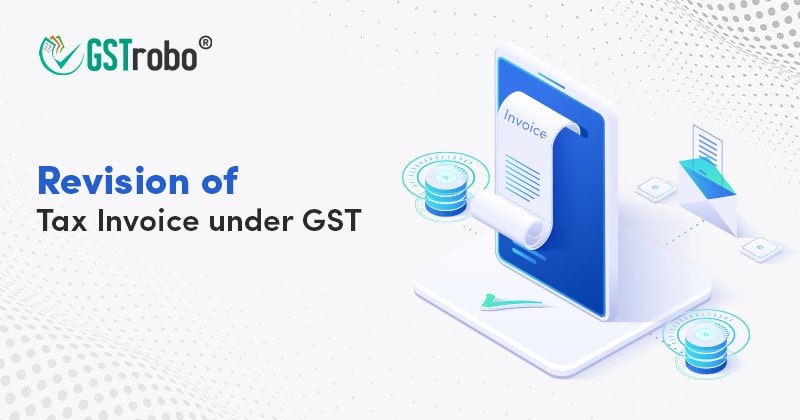Revision of Tax Invoice under GST
When making transactions, it’s not unusual for an invoice to be issued by mistake under the GST, or for a few invoices to require revisions. In such circumstances, the invoices must be corrected and reported in the monthly returns. The procedure is known as invoice revision.

Revision of GST invoices can manifest in many ways, with the final outcome being either a corrected or supplemental invoice. A change in the GST rate, for example, might result in an upward or downward adjustment in the pricing of goods and/or services. A credit note can be used to make a downward revision, whereas a supplemental invoice or debit note can be used to make an upward revision. A ‘revised invoice’ is issued when a registered person is required to produce an invoice for supplies made prior to acquiring GST registration.
When to Issue a revised invoice under GST?
Revise can be issued for multiple reasons
Every registered person who has been given registration with effect from a date earlier than the date of issuance of the certificate of registration to him may issue revised tax invoices for taxable supplies made between the effective date of registration and the date of issuance of the certificate of registration.
Provided that during such a period, the registered person may submit a consolidated amended tax invoice in respect of all taxable supplies made to a recipient who is not registered under the Act.
Furthermore, when the value of a supply does not exceed two lahks and fifty thousand rupees, a consolidated amended invoice may be issued individually in respect of all receivers situated in a State who are not registered under the Act.
The revised invoice must be issued within one month after the registration certificate’s issuance date.
How can you make changes to GST invoices?
The registered person would be required to issue a corrected invoice for all invoices issued during the above-mentioned timeframe. The taxpayer should include the original invoice’s data in a new invoice that follows the format outlined below.
Content of Revised Invoice
The GST law requires that the following information be provided in a revised invoice:
- The nature of the invoice must be clearly stated, such as “Revised Invoice” or “Supplementary Invoice.”
- The supplier’s name, address, and GSTIN.
- The invoice’s alpha-numeric serial number, which is unique (16 digit containing alphabets or numerals or special characters-hyphen or dash and slash symbolized as “-‘ and “/”) to the financial year.
- The date of the invoice.
- The recipient’s name, address, and GSTIN (if applicable).
- Name, address of the delivery location, as well as state and zip code (if the recipient is an unregistered person).
- The serial number and date of the original invoice against which the revised/supplementary invoice is being issued.
- The supplier’s or authorized person’s signature or digital signature.
What Are Supplementary Invoices and How Do You Utilize Them?
A supplemental tax invoice is one that a taxed person produces if a deficiency is discovered in a tax invoice that the taxable person has already issued. A debit note is another name for a supplemental invoice.
Under GST, a supplemental invoice is used to correct a deficit in the original tax invoice. In some cases, the taxable value of the goods and/or services may have been understated in the initial tax invoice, resulting in a lower tax rate or other shortcomings. As a result, an upward correction may be necessary. A supplementary invoice or debit note must be provided in such circumstances.
Aside from taking care of such revisions, the “Format of Revised Invoice” section contains the information that is required to be included in the invoice.
Revised Invoice and Supplementary Invoice – Difference
The following are the differences between a revised invoice and a supplementary invoice:
| Parameters/Types | Revised Invoice | Supplementary Invoice |
| Applicability | Before getting GST registration, a taxable person may issue a revised invoice for an invoice that he has previously issued. | If a taxable person discovers a deficiency in a tax invoice that he or she has previously issued, the taxable person must provide a supplemental tax invoice. |
| When to Issue? | The time between the effective date of registration and the issue of a Certificate of Registration is known as the registration period. | Can be issued up to September month return filing of succeeding financial year. |
